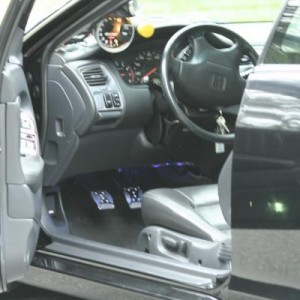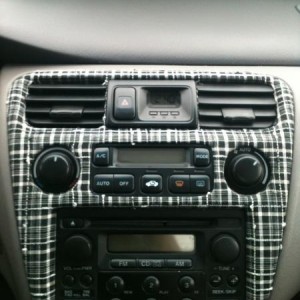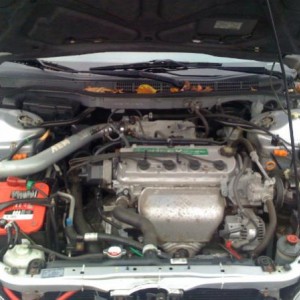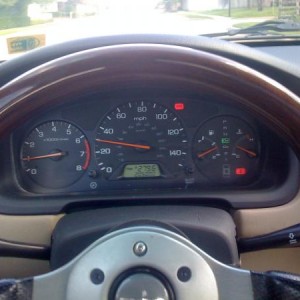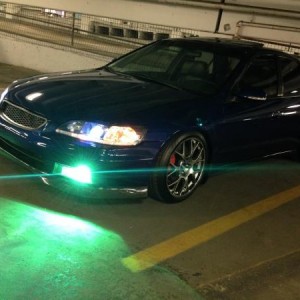...there are oil leaks from the valve covers, oil pump, and rear main seal...
that odor inside the car... i presume it's still present (unless you set the climate control to recycle cabin air). so, in retrospect would you now characterize it as a burnt oil odor, rather than exhaust smell? i'm gonna guess: yes. the two odors are distinct and near-impossible to confuse.
i recommend you consider the srvc dept's assessment as just ONE opinion rather than a statute diagnosis, and work on confirming the items in their report. back away from eBay, take a breather and relax for a bit... at least until you've checked out things yourself. if basic t'shooting of basic engine maladies isn't your bailiwick, then dump a quart of oil in the engine and schedule a second gander by a well-regarded local shop--preferably a shop that is Honda-centric (Google it).
you mention the diagnosis was "valve covers, oil pump, and rear main seal". expect an aged J30A1 shy of 200k to seep oil in the usual locations, but it's rare for these stalwart engines to hemorrhage oil. fortunately, there's a relatively simple way to investigate--more on this in a moment.
first, valve cover (actually, it's called the "cylinder head cover" per Honda) gaskets generally weep oil--rarely do they leak the stuff. check the cover bolts are torqued to spec. (~8lbs... what am i saying?? you don't own a torque wrench!). it's neither terribly onerous or expensive to replace the set, presuming the part (OEM p/n: 12030-P8C-A00) has genuinely failed. there are plenty of good videos on YouTube that detail the process.
regarding "oil pump", perhaps you misheard/misquote the service manager? the oil pump lives inside the oil pan, submerged in a yummy 5w-30 lavage, soooo "leaking oil pump" is a misnomer. ("oil sending unit" maybe..? "oil switch" perhaps..? "oil pan gasket" perchance...?). you need to revisit this.
and finally, that "rear main seal". if... IF... that $10 part (OEM p/n: 91214-P8A-A01) is genuinely leaking, then, well... that just sucks (for you). it is violently difficult to get to that part. thus, one needs to be damn confident in their condemnation of the rear main seal before threatening its summary replacement. one tell-tale clue: fresh oil collects at/near the cover plate between the transmission bell and oil pan.
tracking engine oil leaks is a general pain in the tuchas. nonetheless, there's a well-vetted, effective, and inexpensive DIY method for doing the deed, and i guarantee the dealership didn't bother doing it. begin by cleaning the engine. i propose you do the following before you take the car anywhere for any further diagnosis.
first...
purchase 1) oil-compatible florescent dye, 2) a UV flashlight, and 3) a jug of 'Purple Power' degreaser.
then...
clean the engine
1) obtain an empty spray bottle. mix up the proscribed ratio of purple power-to-water-by-spray-bottle-volume. wear eye protection. wear gloves. or don't. your call.
2) slide under the Accord and douse the engine's nether regions with the contents of the bottle. refill and repeat as necessary.
3) pop the hood and douse the top side of the engine with the contents of the bottle. refill and repeat as necessary.
4) allow the purple power to chomp on the oily gunk for about 10 mins, then thoroughly rinse the whole shebang with a garden hose. let the engine dry.
5) dump a jigger of dye into your oil filler upper orifice. top off the oil while your at it.
let the engine dry
6) idle the engine (or drive the car) for, say, 15 mins or so. the intent is to operate the engine at nominal temperature and under load to induce oil seepage.
7) pull into a somewhat dark space, pop the hood and scan all parts of the engine with the UV flashlight. oil seepage/leaks will be immediately apparent--there will be zero ambiguity.
8) slide under the engine and continue your inspection with the UV flashlight.
if you are uncertain what you are looking for, there are plenty of good videos on YouTube that detail this process.
the end game here is to empower yourself with foreknowledge of probable trouble spots before you take it somewhere for a tech's cursory evaluation. the fact that you detect the acrid smell of burnt oil means something is leaking on to a hot surface, and in such concentration that it's being drawn into the cabin. so it's apparent there's a problem somewhere. you've purchased information that suggests three--well, two--possible locations where oil is leaking, so you have a couple places to focus your UV flashlight straight away. and with the tools and technique mentioned here, you can possibly verify or eliminate some candidate sources of oil seepage. you may also discover one or more that were missed entirely.
Last edited:



